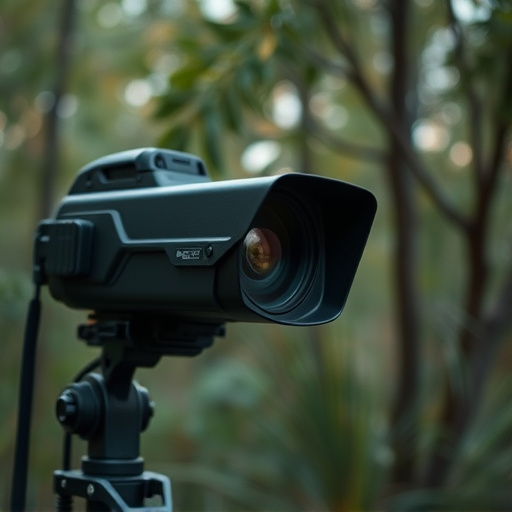Battery operated hidden childcare cameras, offering convenience and safety monitoring, raise ethical concerns. They require responsible use, understanding of features, and legal awareness to protect children's privacy. Non-invasive scanning techniques like thermal imaging and RF detection locate these devices discreetly. Advanced signal analysis tools identify unique RF signatures for accurate camera localization. Strict guidelines and transparency are essential to balance security with personal freedom, especially in childcare settings.
Hidden recording devices, particularly battery-operated childcare cameras, have become a contentious issue due to their non-obvious presence. This article explores advanced scanning methods for detecting these devices, focusing on non-invasive techniques and sophisticated signal analysis. We delve into the legal and ethical considerations surrounding surveillance, providing insights that are crucial for both parents seeking peace of mind and professionals navigating privacy regulations.
- Understanding Battery-Operated Hidden Cameras
- Non-Invasive Scanning Techniques for Detection
- Advanced Signal Analysis: Uncovering Hidden Devices
- Legal and Ethical Considerations in Surveillance
Understanding Battery-Operated Hidden Cameras
Hidden cameras powered by batteries are a prevalent concern in childcare settings, offering both convenience and potential privacy breaches. These battery-operated hidden childcare cameras are often discreetly placed to monitor activities and ensure child safety. However, they can also raise ethical questions if not used responsibly.
Parents and caregivers must be aware of the types of devices available, their capabilities, and legal implications. Many modern battery-operated hidden cameras offer advanced features like motion detection, night vision, and remote access via smartphone apps. Understanding how these devices operate and where they are located can help parents stay informed and ensure their children’s privacy is respected while still allowing for necessary supervision.
Non-Invasive Scanning Techniques for Detection
When it comes to detecting hidden recording devices, non-invasive scanning techniques have emerged as powerful tools, especially for scenarios involving battery-operated hidden childcare cameras. These methods offer a discreet and safe approach to identifying surveillance equipment without causing any physical damage or disrupting normal operations. One prominent technique is thermal imaging, which detects heat signatures and can reveal the presence of electronic devices operating internally. By scanning surfaces for unusual temperature patterns, professionals can pinpoint hidden cameras, ensuring peace of mind in environments like daycares, schools, and offices.
Another less obtrusive method is radio frequency (RF) detection. RF scanners pick up electromagnetic signals emitted by various devices, including hidden cameras with wireless capabilities. This technique allows for a sweep of an area to identify any active RF signals, enabling the location of battery-operated hidden childcare cameras or similar surveillance equipment. These non-invasive methods are particularly valuable in situations where direct physical access is limited or prohibited, ensuring that privacy and security concerns are addressed without causing disruption.
Advanced Signal Analysis: Uncovering Hidden Devices
In the quest to uncover hidden devices like battery-operated childcare cameras, advanced signal analysis techniques play a pivotal role. These methods go beyond basic scanning and involve sophisticated algorithms that can detect subtle variations in electromagnetic signals. By analyzing radio frequency (RF) patterns, experts can identify unique signatures emitted by such devices, even when they’re operating in stealth mode.
This process requires specialized equipment and software capable of filtering noise and distinguishing between various signals. Once detected, hidden cameras can be triangulated to determine their location within a given space. Such advanced signal analysis isn’t just confined to childcare settings; it’s a powerful tool for ensuring privacy, security, and transparency in numerous other applications where covert surveillance might be present.
Legal and Ethical Considerations in Surveillance
The use of hidden recording devices, particularly battery-operated childcare cameras, raises significant legal and ethical concerns. While these devices can serve as valuable tools for surveillance and monitoring, their deployment must adhere to strict guidelines to protect privacy rights. Many countries have stringent regulations in place regarding hidden camera usage, especially in sensitive areas like homes and childcare centers, to prevent abuse and ensure consent is obtained where applicable.
Ethical considerations demand that the use of such devices be transparent and proportionate. The potential impact on individuals’ privacy should be carefully evaluated, with a focus on balancing security needs against personal freedom. In the context of childcare, parents must be informed about hidden cameras to create a safe environment for children while respecting their right to privacy as developing individuals.
Hidden recording device signal scanning has evolved from invasive methods to advanced, non-invasive techniques powered by sophisticated signal analysis. Understanding battery-operated hidden childcare cameras requires a balance between effective detection and legal, ethical considerations. By leveraging innovative scanning tools and analytical software, professionals can now uncover these devices more accurately, ensuring safety while respecting privacy rights. This approach is pivotal in various sectors, including childcare, to maintain trust and foster a secure environment.
